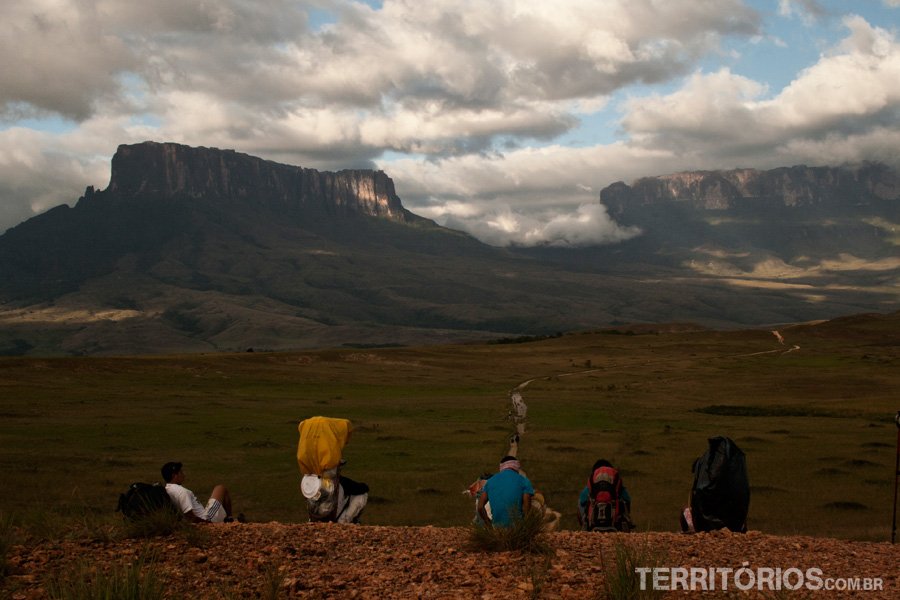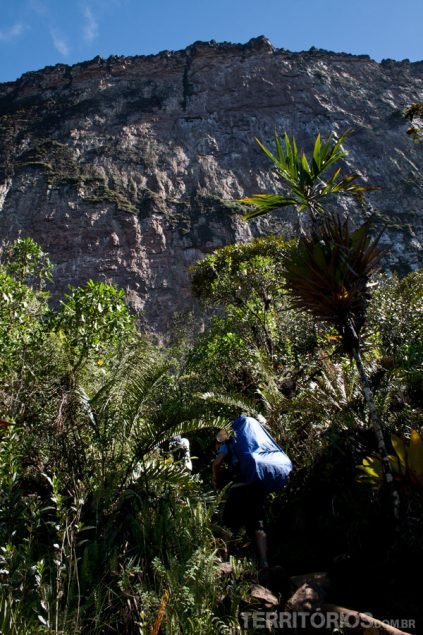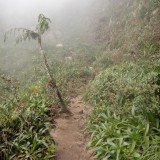Mount Roraima is the hardest long trail I have ever done. Even wearing suitable clothing and equipment and being an expert at this kind of trekking, it is vital to have specific physical preparation. I confess I failed; I did not work out for months like I did before. It just happens that the trip was an opportunity, I decided to accept the challenge three days before leaving and, even with the difficulties, I am sure it was worthwhile.
As a matter of routine, I try to walk a lot in the city and go trekking once a month. A few days before I experienced intense activity in Aparados da Serra, did dance and stretching classes. However, on the third day in Mount Roraima I started to miss having strengthened my arm muscles and improved my fitness, especially on the legs.
The pains of a long trail
It was hard to get up the next day, my hips and thighs were aching. Much worse on the following days, feeling the gluteus and calves, but it all goes away as soon as the body warms up. I carried only 5 kg; the other 10 kg I paid a carrier, I knew I would not be able to. If I had strengthened my back and abdomen muscles before, I would have carried everything. On the other hand, it was nice to enjoy the trekking observing the surroundings; carrying all this weight would be a self-improvement crossing, instead of contemplation.
Reaching the top of Mount Roraima is an achievement. The mountain puts you to the test. The rules and difficulties are set at the time and are unique for each one. A year before Leandro made the same trip and wrote reports (links below) quite different from mine. So, open up, put your mind to it and forget about the comfort. Get ready to hike for 90 km in six days, almost 2000 meters up and down.
I arrived in Boa Vista at 2 am and left at 5 am with the expedition. I already started sleep deprived and traveling 214 km to Pacaraima (on the border with Venezuela), plus two hours on dirt road to Paratepuy. We started from 1000 m of altitude in hot weather, the early afternoon heat only decreased after a heavy ascent followed by a gust of wind. At that moment we saw the complete face of the mountain and spotted the goal of the day, which was only achieved at night.
The first two days were painless, but tiring due to the high temperature and the feeling of walking for hours without going anywhere. That is the savannah: plain terrain, ground vegetation and the mountain slowly getting closer. We had more ascents on the second day, but on the third day we felt the impact of facing the slope. It was about 600 m of climb-walk (walk using hands and feet in an uneven and steep terrain) plus 300 m of a steep ascent in only four hours. At the end of this path came the rain, soaking the ground and making it complicated on the hardest stretch of all – Passo das Lágrimas.
The fourth and part of the fifth day take place on rough ground on the summit. You need strong legs to go up and down the stones and strong arms when holding your body weight over bigger stones, or when you are pulled and tossed by the guide. It was over 24 km exploring the upper part of the plateau, and the legs must be strong for the descent on the fifth day! The distance we climbed in two days is the same to go down in one day. From this moment on slipping is a matter of time. I lost count of how many times I fell from the rocks for being tired; thank God I let myself go and did not get hurt.
The last day is just like the first one; the only difference is that I wanted to walk backwards watching the mountain.
Take Note
The best tip to relax the muscles and renew the energies is to bathe in the near rivers for as long as you can handle the cold. I did not have the guts to enter the waters on the summit, but everyone who did recommends.
More posts about this expedition:

The orange spot in the middle of the picture is a person
© All rights reserved. Pictures and report 100% originals.
Translated by Lúcia Maciel
English teacher


































